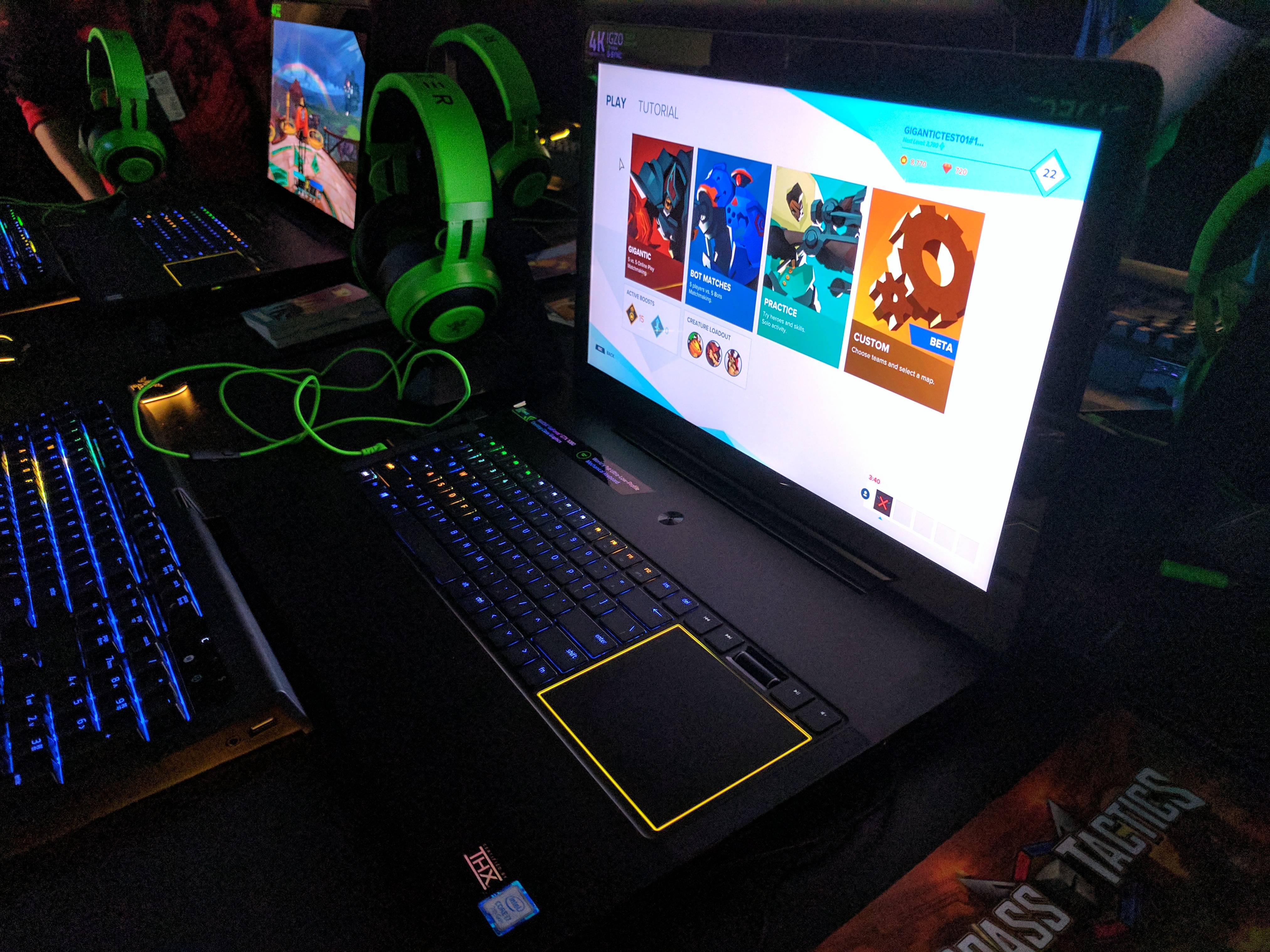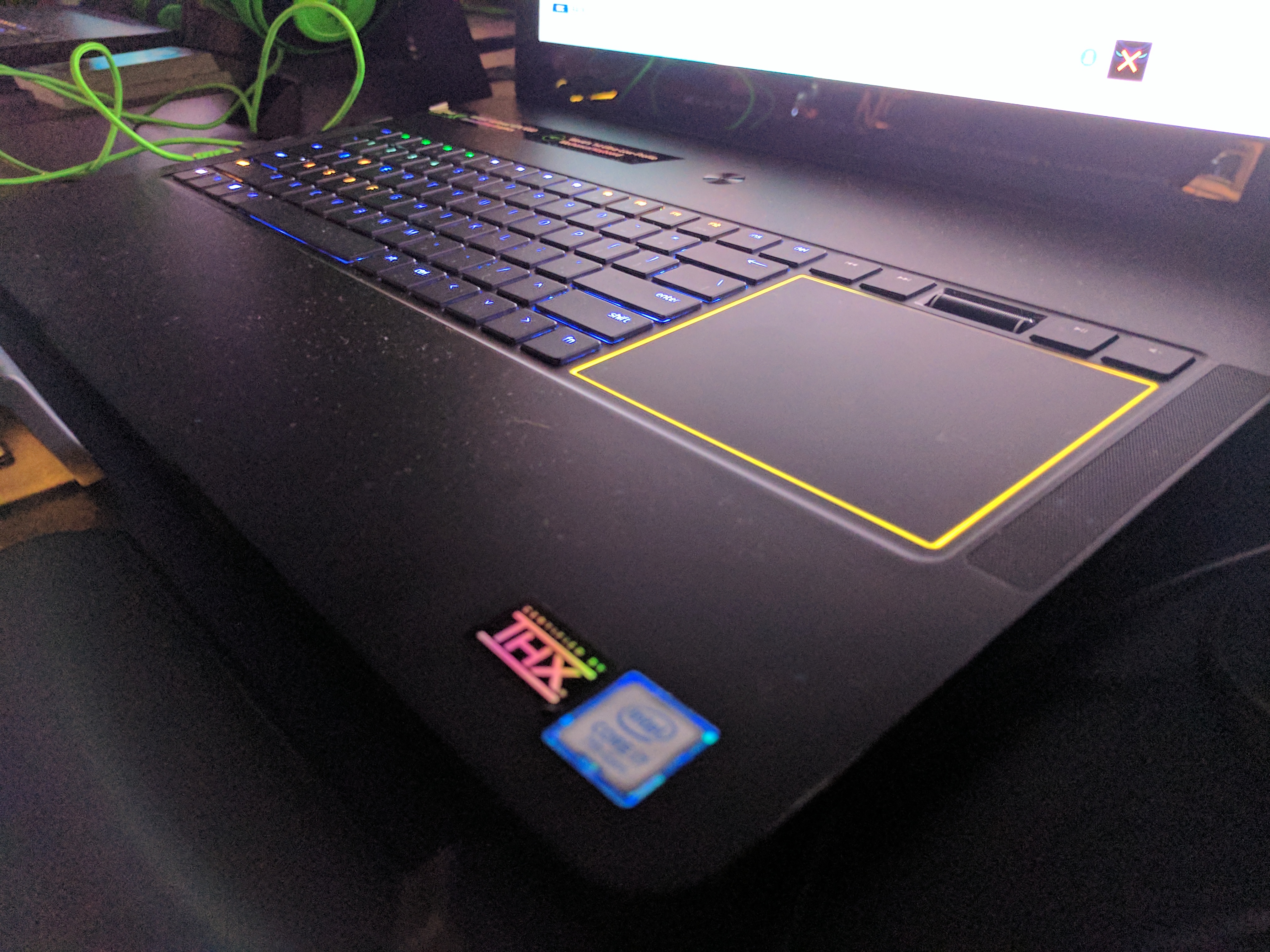The new Razer Blade Pro's lower price comes at the cost of graphics
The price is appealing, but is the compromise really a good deal?

Ever since Razer launched the Blade Pro, it's drawn the eyes of mobile gamers looking for the best possible performance from a gaming laptop. At $4,000, however, it’s been out of reach for all but the wealthiest enthusiast.
In response to demands for a more reasonably priced 17-inch laptop, Razer now offers Blade Pro that falls closer to the middle of the road. Its GTX 1060, 1080p panel, and standard storage options bring it down to an appealing $2,300 price point, but is it really that good of a deal?
Graphical compromise
The new Blade Pro shaves some of the meatier parts off the $4,000 4K Blade Pro. The GTX 1080 has been reduced to a GTX 1060, and the screen is down from a 4K touch panel to a non-touch 1080p screen with a 120Hz refresh rate. There are some other minor changes too, including sticking with membrane switches instead of the full mechanical keyboard found in the 4K Blade Pro.
In terms of performance and price, the Blade Pro competes with the 15-inch Asus ROG Zephyrus. There are two Zephyrus configurations, and the GTX 1070 version for $2,300 is almost identical to the Blade Pro under the hood. They sport the same Intel Core i7-7700HQ CPU, 16GB of RAM, and a 256GB PCIe boot drive, although Razer throws in an extra 2TB data drive. Despite that, the ROG’s GTX 1070 with Max-Q is bound to produce much better performance at 1080p, something that adding an extra hard drive can’t accomplish.
If it has to be 17 inches, the Acer Predator 17 comes in well under $2,000 for a build with a GTX 1070, a common trend for gaming laptops. In that sense, the Blade Pro is high on the price curve, and you’re unlikely to find other systems at the price point with anything less than a GTX 1070.
Razer has also cut the battery down from 99Wh, the largest you can take on an airplane, to a more standard 70Wh. That’s a change that’s likely to fly under the radar for a lot of users, and it could be detrimental. A 17-inch 120Hz screen isn’t easy to keep powered for very long, and users may find themselves reaching for a charger quite a bit.

Razer’s standard Blade falls close to the new Blade Pro’s performance level, so instead it's the form factor that's drawing users in. Whether a new wave of thin, premium systems can renew interest in the form factor is a larger question, but these large laptops have certainly improved. Both the Blade Pro and ROG Zephyrus have thin, lightweight constructions, touchpads mounted to the right of the keyboard, and 120Hz 1080p displays.
The biggest gaming news, reviews and hardware deals
Keep up to date with the most important stories and the best deals, as picked by the PC Gamer team.
Asus’ ROG Zephyrus also has some tricks up its sleeve that are likely to appeal to the Blade Pro’s target audience. It’s actually a tenth of an inch thinner than the Blade Pro, thanks to the hinging lift on the bottom that opens the chassis for better airflow, and is still two pounds lighter. That’s also thanks to the ROG Zephyrus’ smaller size. Other 17 inch systems tend to be a lot heavier, with the Acer Predator 17 pushing nine pounds.
Mid-range graphics, high-end price
The GTX 1060-powered shaves $1,700 off the high-end Blade Pro’s $4,000 price tag, which brings it to a much more palatable $2,300. That’s still a lot to spend on a gaming laptop, and it comes from a brand not known to aggressively price its premium products. Its competition from more generic brands, or those that use off-the-shelf Clevo enclosures, typically fall just under $2,000, and almost all of them sport a GTX 1070 instead of the more modest mid-range card.
That includes the Asus ROG Zephyrus, which sports a GTX 1070 Max-Q, and otherwise remarkably similar components to the 1080p Blade Pro, all the way down to the storage and screen refresh rate, albeit at 15 inches. Acer’s Predator 17 stays under $2,000, even with similar performance to the Zephyrus or Blade Pro.
At the end of the day, Razer’s Blade Pro makes a number of compromises in order to get more people into its cutting-edge 17-inch systems. They’re mostly the right changes to make, such as cutting the resolution in favor of higher refresh rates, while leaving storage options intact. The biggest detriment to the system is the GTX 1060, which is more commonly found in sub-$1500 systems. It’s presence here isn’t a deal-breaker, but it isn’t ideal, and there’s no shortage of options with better GPUs.
Sitting right next to each other, the Blade Pro’s matte black simplicity cuts a more elegant figure than the ROG Zephyrus’ large forehead over the keyboard, and is easier on the eyes and the back than the massive Acer Predator 17. Anyone looking to spend more than $2,000 isn’t just looking for a workhorse, they’re looking for something to turn heads, and the Blade Pro is one of a small number of aesthetically-focused 17-inch laptops. Just know that there are better performance alternatives out there, particularly if you’re on a budget.

